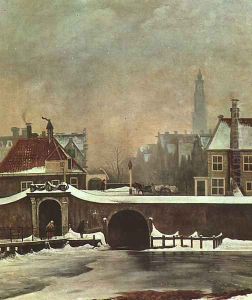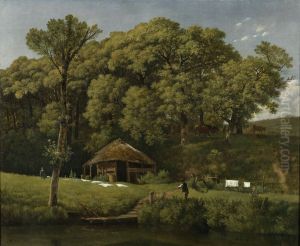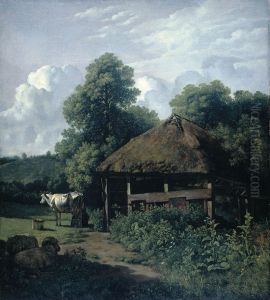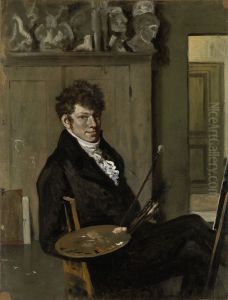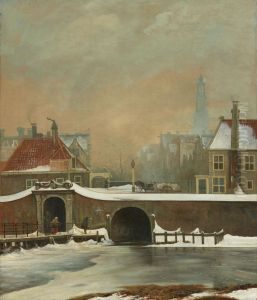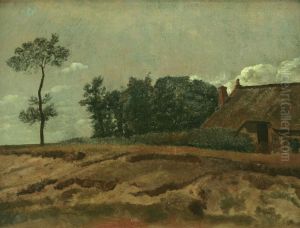Wouter Johannes van Troostwijk Paintings
Wouter Johannes van Troostwijk was an influential Dutch artist born on August 8, 1782, in Amsterdam. Although he lived a short life, passing away at the age of 28 on September 28, 1810, he left a significant mark on the Dutch art scene of the late 18th and early 19th centuries. Van Troostwijk was especially known for his landscape and still-life paintings, which demonstrated a remarkable understanding of light and shadow, as well as a keen eye for detail. Despite his brief career, his work is considered an important link between the Dutch Golden Age of painting and the modern art movements that followed.
Van Troostwijk was primarily self-taught, although he did receive some guidance from Amsterdam artist Jurriaan Andriessen. His talent was evident from an early age, and his approach to painting was meticulous and grounded in a fascination with the natural world. He is often associated with the pre-Romantic movement, and his work occasionally reflects the sentiments of Romanticism, particularly in his dynamic landscapes and atmospheric effects.
Unfortunately, van Troostwijk's life was cut short due to illness. However, his work was appreciated by his contemporaries and has been studied by art historians as an example of the transitionary period in Dutch art. His most famous painting, 'The Raampoortje in Amsterdam', exemplifies his skill in capturing the essence of Dutch urban landscapes with precision and atmospheric realism. Today, his works are held in various collections, including the Amsterdam Museum, and continue to be celebrated for their contribution to the Dutch artistic heritage.
